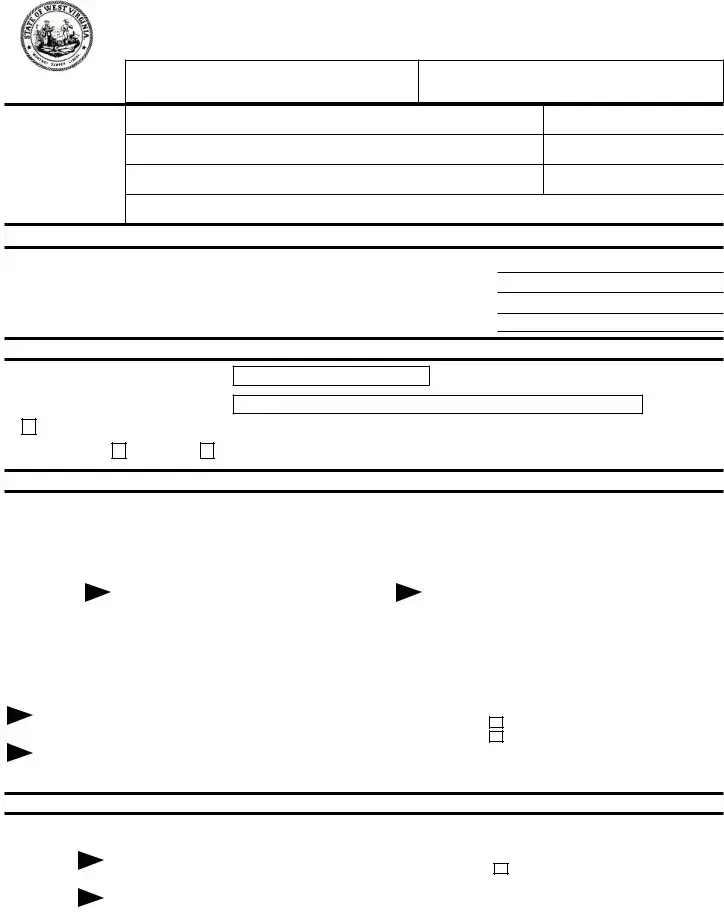The WV 8453 form, specific to West Virginia, is closely related to the IRS Form 8879, the IRS e-file Signature Authorization. Both forms serve as tools to authenticate the taxpayer's consent to electronically file their tax returns. While WV 8453 pertains to West Virginia state taxes, Form 8879 applies to federal tax returns. Each form collects taxpayer information, including Social Security Numbers, and details regarding refunds or balances due, and requires taxpayer signatures to authorize electronic submission.
Form W-2, the Wage and Tax Statement, shares similarities with the WV 8453 in that it is integral to tax filing processes. The Form W-2 is issued by employers to employees to report annual wages and the amount of taxes withheld from their paychecks. Like the WV 8453, it includes necessary personal and financial information, which is crucial for accurately preparing tax returns. However, the W-2 is an informational document provided by employers, whereas the WV 8453 is completed by the taxpayer or their representative.
Another related document is the Form 1040, the U.S. Individual Income Tax Return. It is the federal counterpart to state-level income tax declarations like WV 8453. Form 1040 collects detailed information about an individual's income, deductions, and credits to determine their tax liability. While WV 8453 focuses on state tax obligations in West Virginia, Form 1040 addresses federal taxes, linking them through the necessity of sharing some of the same financial information across both forms.
Similar to the WV 8453 is the Form 4868, Application for Automatic Extension of Time To File U.S. Individual Income Tax Return. While WV 8453 is used for electronic filing authorization, Form 4868 is submitted when taxpayers need more time to file their federal income tax return. Both forms involve the IRS and taxation processes, but they serve different purposes: one for electronic filing consent and the other for requesting filing extensions.
Form 1099, particularly its various versions (like 1099-MISC, 1099-INT), shares a link with the WV 8453 as well. These forms report various types of income other than wages, salaries, and tips. The information reported on Form 1099s can affect the tax return information used in WV 8453, such as in determining the federal adjusted gross income, which is necessary for completing both state and federal tax forms.
The Schedule SE (Form 1040), Self-Employment Tax, bears similarity to WV 8453 as it pertains to the tax filing process, focusing on individuals who have earned income from self-employment. It calculates the amount of self-employment tax owed by a taxpayer, information that would influence the numbers reported on the WV 8453. While Schedule SE applies to federal tax calculations, it indirectly informs state tax obligations.
Form IT-140, the West Virginia Personal Income Tax Return, is directly related to the WV 8543. It is where the taxpayer reports their West Virginia income, calculates tax liability, and determines either the amount owed to the state or the refund due from it. The WV 8453 serves as a declaration for electronic filing of the information completed in Form IT-140, making them complementary components of the state’s e-filing process.
Form 8822, Change of Address, although not exclusively for tax filing, is related to the WV 8453 by ensuring the IRS and state tax agencies have current taxpayer information. If a taxpayer moves and files Form 8822, this updated address information should be reflected in the WV 8453 to ensure correspondence and tax documents are accurately sent. Both are administrative forms that support the proper management of tax filings.
The Electronic Funds Withdrawal (EFW) Authorization Form is another document that functions similarly to a section of WV 8453. It specifically relates to the direct deposit or electronic funds withdrawal for tax payments or refunds, a feature also present in WV 8453's design. While an EFW Authorization Form is more generically used for various types of payments to the IRS or states, the WV 8451 includes similar authorization specifically for the purpose of state tax payments or refunds.
Last, the Direct Deposit of Refund to More Than One Account form, used for allocating a tax refund among multiple accounts, is conceptually related to the direct deposit information section of WV 8453. Both allow taxpayers to designate where they want their refunds deposited, though the WV 8453 is confined to either a single checking or savings account for the convenience of state tax refund processing.
